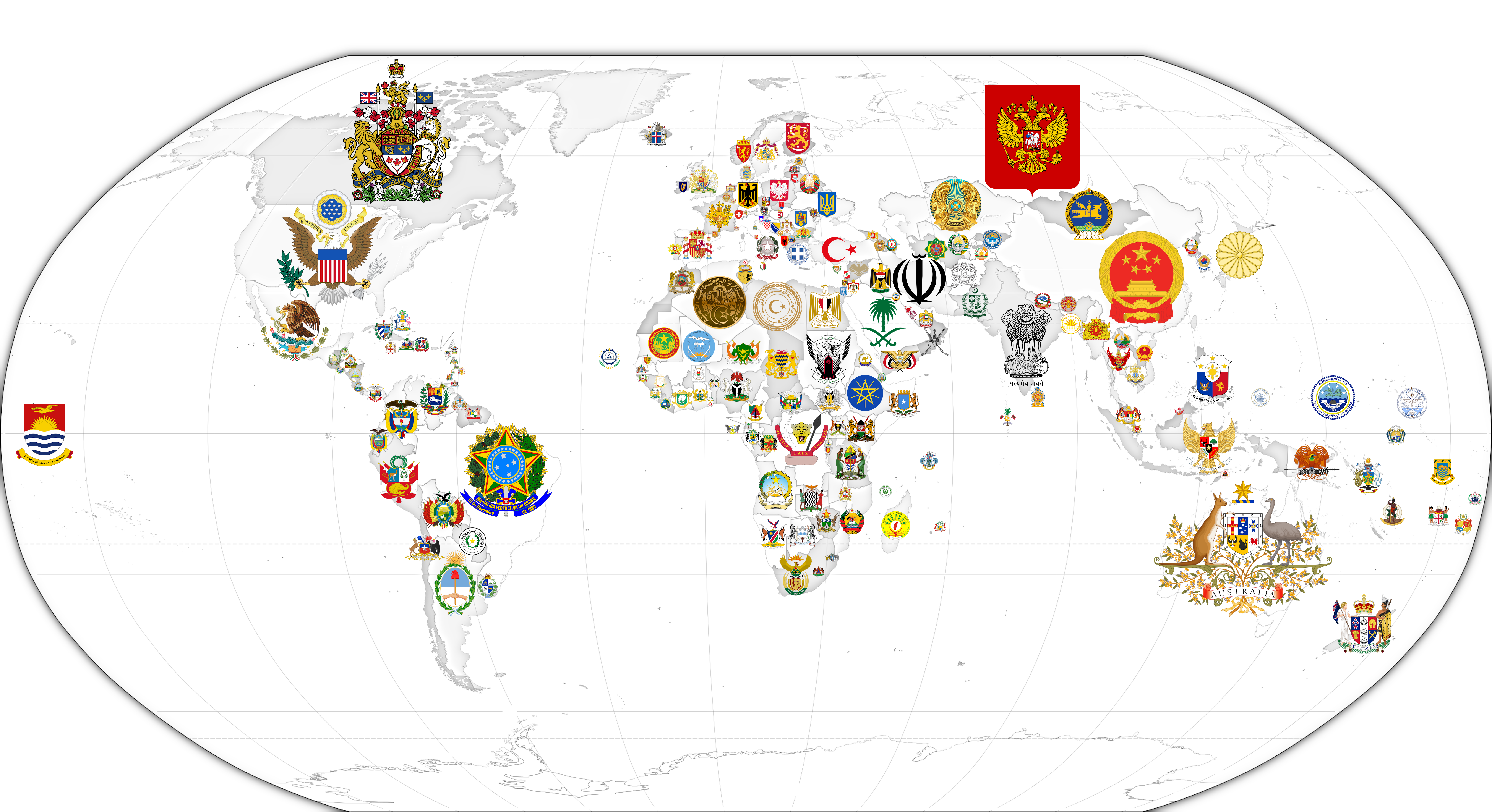Map of Coat of Arms by Country


Marcus Rodriguez
Historical Geography Expert
Marcus Rodriguez specializes in historical cartography and geographic data analysis. With a background in both history and geography, he brings unique...
Geographic Analysis
What This Map Shows
The "Map of Coat of Arms by Country" provides a fascinating visual representation of the heraldic symbols that represent the nations of the world. Each coat of arms is a unique emblem that embodies a country's history, culture, and values, often featuring elements like animals, plants, and colors that symbolize various aspects of national identity. This map not only serves as a reference but also invites viewers to explore the rich tapestry of global heritage reflected in these emblems.
Deep Dive into Coats of Arms
Ever wondered why some nations have lions on their coats of arms while others feature eagles or mythical creatures? The coat of arms is a heraldic design on an escutcheon or shield that serves as a symbol of national pride and identity. Traditionally, coats of arms were used in battles to identify warriors and their allegiances. Today, they are adopted by countries to represent their sovereignty and heritage.
Interestingly, the elements depicted in a coat of arms can convey profound meanings. For example, the lion is often associated with bravery and strength, while the olive branch symbolizes peace. The colors used also carry significance; red can represent valor, blue depicts loyalty, and green often stands for hope or fertility. These symbols combine to tell a story about each nation’s values and history.
Around the world, coats of arms vary significantly. For instance, the coat of arms of the United Kingdom features a lion and a unicorn, representing England and Scotland, respectively. In contrast, the coat of arms of Brazil showcases a starry sky, symbolizing its aspirations and hopes. Each emblem has its own unique narrative that reflects the country’s journey through history.
Furthermore, many coats of arms have been revised or replaced over the years to reflect changing political landscapes or cultural shifts. For example, South Africa's coat of arms underwent a significant redesign in 2000 post-apartheid to embrace a more inclusive national identity.
This visual representation helps draw attention to the diversity of cultural symbols around the world. The coat of arms is not just an artistic representation; it is a reminder of the values and historical narratives that shape nations.
Regional Analysis
When examining the map, it’s fascinating to see how regional differences manifest in the coats of arms across continents. In Europe, for instance, coats of arms often feature intricate designs with historical significance. Countries like Spain and France have coats of arms that include references to their royal histories, while nations like Germany showcase regional symbols that reflect the country's federal structure.
In contrast, coats of arms from African countries frequently incorporate indigenous symbols and imagery that reflect the continent's rich cultural diversity. Take the coat of arms of Kenya, which features a shield and spears, symbolizing the defense of the nation, alongside the national flower, the golden sunflower, representing growth and prosperity. Meanwhile, in Asia, coats of arms might include symbols of auspiciousness and prosperity, as seen in the coat of arms of Bhutan, which prominently features the Thunder Dragon, a symbol of the country's heritage.
Interestingly, some nations choose to simplify their coats of arms in modern designs to reflect contemporary values. For instance, the coat of arms of Canada prominently features a simple yet powerful image of a maple leaf, representing the country’s identity without the complexities found in more traditional heraldry.
Significance and Impact
Understanding coats of arms goes beyond mere aesthetics; these symbols play a significant role in national identity and pride. They are often displayed during national holidays, sporting events, and international forums, fostering a sense of unity among citizens. Furthermore, they are an essential part of the cultural literacy of a nation, as they encapsulate historical narratives that shape collective memory.
As the world becomes more interconnected, the significance of coats of arms may evolve. Countries are increasingly using these symbols to promote tourism and cultural exchange, showcasing their unique identities on the global stage. Current trends indicate a growing interest in heritage and history, with more people seeking to understand the stories behind their national symbols.
In conclusion, the "Map of Coat of Arms by Country" is not just a visual representation; it is a window into the values, history, and heritage of nations around the globe. As we delve deeper into the meanings behind these emblems, we gain a greater appreciation for the diverse tapestry of human culture.
Visualization Details
- Published
- September 28, 2025
- Views
- 42
Comments
Loading comments...